January 22, 2025 | 11:07 GMT +7
January 22, 2025 | 11:07 GMT +7
Hotline: 0913.378.918
January 22, 2025 | 11:07 GMT +7
Hotline: 0913.378.918
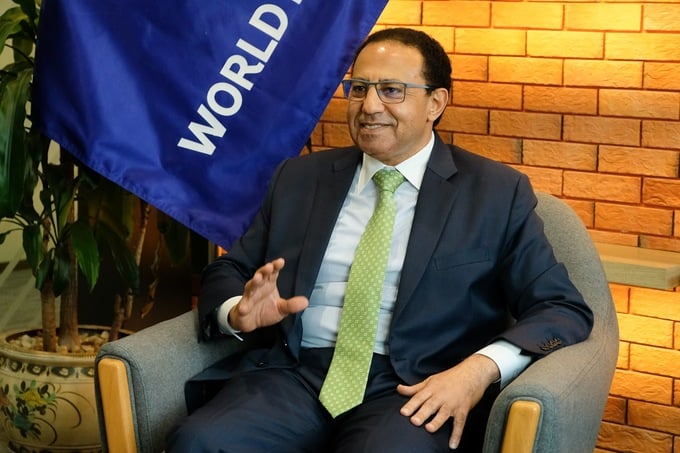
Ahmed Eiweida, Vietnam Sector Leader for Sustainable Development (World Bank). Photo: Tung Dinh.
How do you assess the mindset shift from agricultural production to agricultural economy in Vietnam in recent years?
For several decades, the government followed the agricultural production model based on volume targets. This growth model did not pay adequate attention to income returns to farmers and all other environmental costs. This led to a dilemma whereas Vietnam’s agricultural production and export revenues increased, farmers’ incomes decreased over time. The shift to the agricultural economy growth model will help reverse this trend, by adopting a ‘more from less’ approach to improve farmers’ incomes and restore ecosystems and the rural environment.
We welcome this mindset shift because of two reasons. First, this approach promotes environmental sustainability. Second, it puts people, particularly farmers, at the heart of the development model – this is aligned with global best practices.
We believe that various government strategies, such as the Strategy for Sustainable Agriculture and Rural Development for the period of 2021-2030 with a vision to 2050 and the Mekong Delta Regional Master Plan, accurately capture the main aspects of the agricultural economy development model which include production, income, export, employment, environment, and new rural criteria. Corresponding to this mindset shift, the World Bank has also adjusted its focus on development assistance towards climate resilience, livelihood diversification, and low-carbon agriculture.
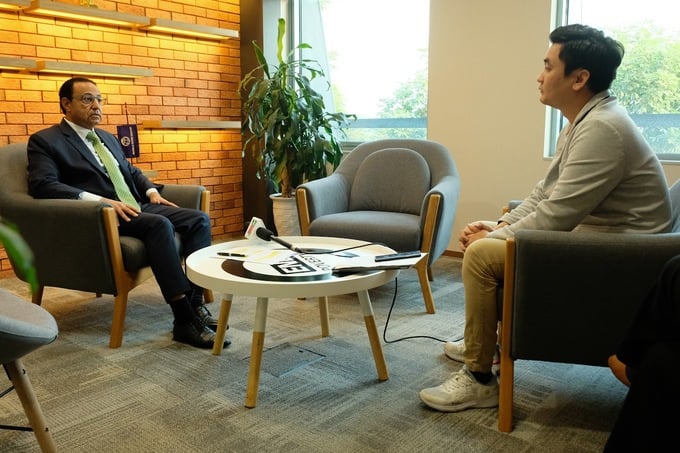
The World Bank specialist had a conversation with reporter of Vietnam Agriculture News. Photo: Tung Dinh.
Vietnam's agricultural exports continue to set a new record, expected to reach 54 billion USD in 2022. What should Vietnam do to promote green and sustainable exports while meeting the high requirements of the export markets?
We are encouraged by the strong performance of the agricultural export which clearly shows the strength and comparative advantage Vietnam’s agriculture sector enjoys. Moving forward, promoting green and low-carbon agricultural production will help strengthen the competitiveness of Vietnam’s agricultural products internationally.
Greening agricultural production and export is a global trend, responding to the growing demand for green and low-carbon products, especially in European markets. For example, 85% of retailers in the EU market reported an increase in sales of sustainably produced agriculture products in the past 5 years, and 92% of them believe the increase will be even bigger in the coming 5 years. The most recent example is that in December 2022, the European Union reached an agreement to ban the import of products including coffee, cocoa and soy in cases where they are deemed to contribute to deforestation.
To produce sustainable and green agricultural products, it is necessary for the government to enable a greater role of the private sector to support agricultural growth, ensure social justice, and protect the environment. Adopting climate-smart agriculture will also be essential. Finally, the country should accelerate digital transformation and the application of new technologies in agricultural production activities.
At COP26, Vietnam pledged that it will reduce net emissions to zero by 2050. What do you think about Vietnam’s green economic development goal and how the World Bank will support Vietnam to realize this goal?
We commend Vietnam’s commitment at COP26 and its pledge at COP27 which is even more ambitious. At COP26, Vietnam pledged that it will reduce net emissions to zero by 2050 and 30% of methane emissions by 2030. At COP27, Vietnam submitted an updated Nationally Determined Contribution (NDC) which sets higher targets. For agriculture, the unconditional NDC target by 2030 increases from 6.8 million tons per NDC 2020 to 12.4 million tons per NDC 2022; the conditional NDC target increases from 32.6 million tons per NDC 2020 to 50.9 million tons per NDC 2022. This translates into financial needs of around US$2.1 billion and US$16.1 billion to meet conditional and unconditional targets, respectively.
As you might know, rice farming is the largest source of greenhouse gas emissions in Vietnam’s agriculture sector, emitting about 49.6 million tons of CO2e annually. Moving to low-carbon rice production offers the highest potential for Vietnam to reduce GHG emissions, particularly methane. The Vietnam Sustainable Agriculture Transformation Project (VNSAT), supported by the World Bank, has demonstrated that by adopting improved technology in rice farming, it will not only help increase yield and net profits for farmers but also significantly reduce GHG emissions. At the time the VNSAT closed in June 2022, the project was able to reduce approximately 1.5 million tons of CO2e annually. These successful experiences are readily available for scaling up if there is support from the government in providing enabling infrastructure and a large-scale extension program. If we can expand the improved farming practices to the remaining core rice areas in the Mekong Delta, it might help reduce over 10 million tons of CO2e annually.
Currently, we are exploring ways to mobilize carbon finance funds to reward the achievements of GHG reductions under VnSAT and finance the new program of developing one million-hectare high-quality and low-carbon rice in the Mekong Delta, led by the Ministry of Agriculture and Rural Development (MARD). The World Bank is also coordinating with FAO and IRRI to assist MARD in developing a standardized Monitoring, Reporting, and Verification (MRV) system for the rice subsector. We hope that mobilizing additional carbon finance funds to support adopting new farming practices will speed up the transformation in the rice subsector into a greener, more sustainable way.
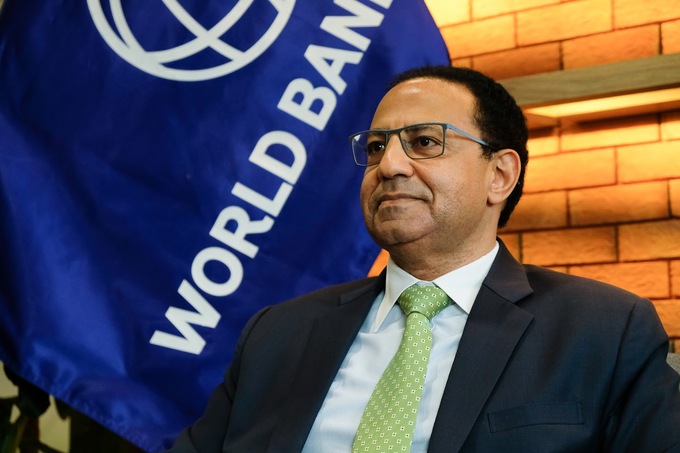
Ahmed Eiweida, Vietnam Sector Leader for Sustainable Development (World Bank). Photo: Tung Dinh.
How do you assess Vietnam’s current agricultural policies and strategies?
Vietnam has achieved huge progress in terms of agriculture policy reforms as well as the development/implementation of related strategies.
We believe the most important new strategy for the agricultural sector is the Sustainable Agriculture and Rural Development Strategy 2030 with a vision to 2050. This represents a major shift in focus from quantity to quality, from environmental degradation to environmental sustainability. In addition, the strategy puts equal emphasis on climate adaptation alongside mitigation. Overall, this strategy is well aligned with the National Green Growth Strategy for the period 2021-2030 with a vision to 2050 and Vietnam’s pledges at COP26 and COP27.
What is equally important now is to translate these various strategies into implementation. This will require the preparation of action plans and prioritized capital investment plans as well as mechanisms to leverage financial resources from the private sector carbon finance and climate funds.
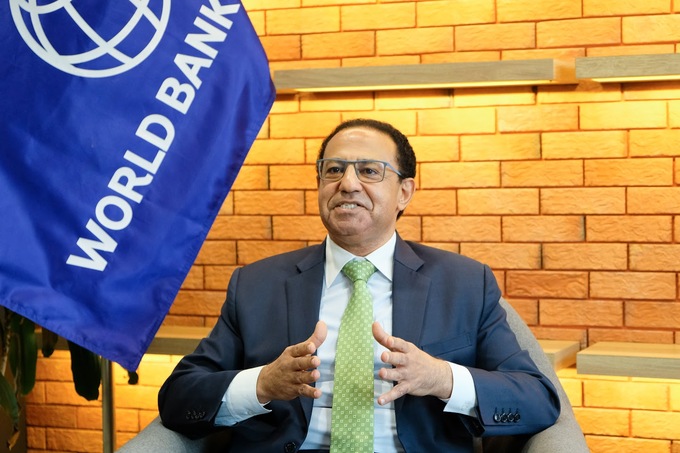
Vietnam's agricultural strategy marked a drastic change. Photo: Tung Dinh.
In your opinion, what kind of reforms the agricultural sector should pursue to contribute more to the country's development goals?
In the next 10 years, we think the agriculture sector may want to focus on these important aspects:
1. Getting policy incentives right to facilitate a transition into green and low-carbon agriculture, including developing benefit-sharing policy and mechanisms, designing supportive policies to foster livelihood diversification; strengthening environmental standards and enforcement; allowing more flexible use of designated rice lands; and increasing investments in research and innovation, agriculture extension, financial literacy, and rural connectivity.
2. Strengthening institutions so the government’s role will move from direct involvement to facilitator; strengthening MARD and DARD capacity in facilitating public-private partnerships, monitoring environmental impacts of policies and investments, and establishing system to access carbon finance; and strengthening farmer institutions.
3. Enhancing private sector participation such as fostering horizontal and vertical productive alliances between farmer cooperative/associations and private buyers and leveraging digital technologies and platforms.
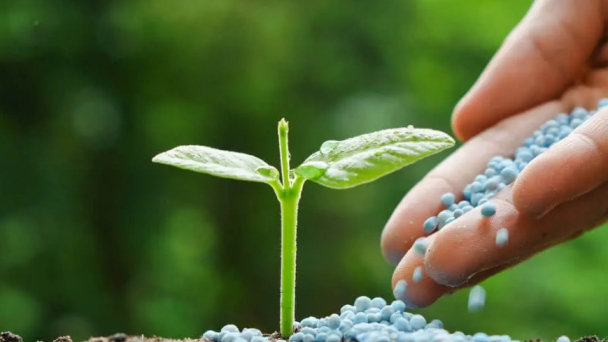
(VAN) Discover how a genetic mutation in plants enhances partnerships with soil microbes, reducing fertilizer use and boosting sustainable farming practices.
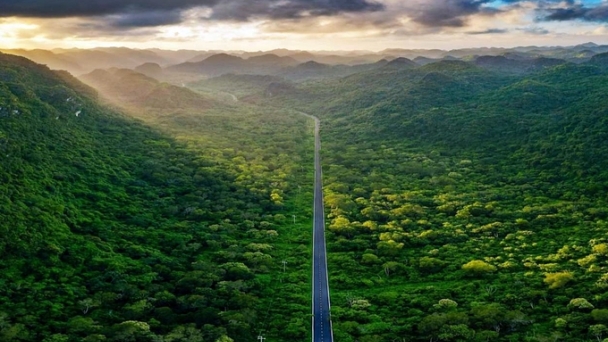
(VAN) This is the result after 5 years of implementing the project, which was carried out by the Ministry of Natural Resources and Environment in collaboration with the United Nations Development Programme (UNDP).
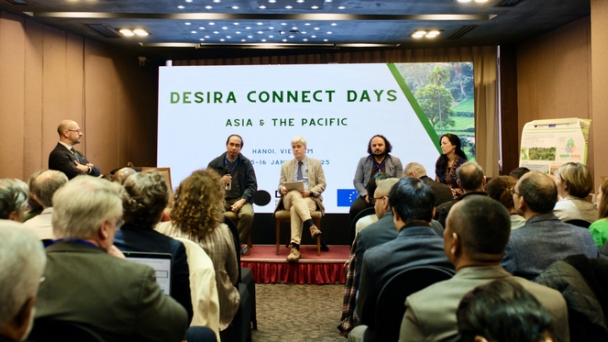
(VAN) The DeSIRA Connect workshop created opportunities for collaboration, emphasizing the integration of indigenous knowledge with scientific advancements to inform policy-making toward more efficient agricultural systems.
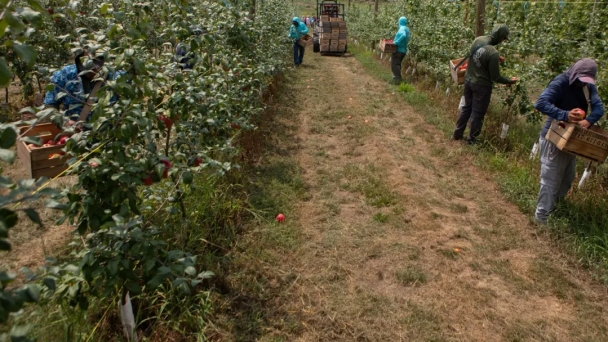
(VAN) Trump’s mass deportation pledge could disrupt Pennsylvania’s agricultural economy as the status of 30,000 farm workers comes under question.
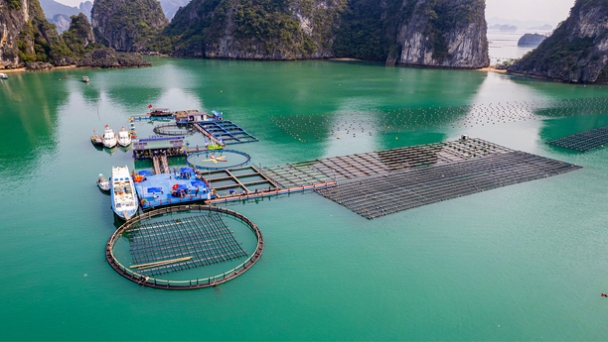
(VAN) Marine spatial planning, enhanced forecasting capabilities, and the provision of marine insurance are key focus areas in aquaculture cooperation between Vietnam and Norway.
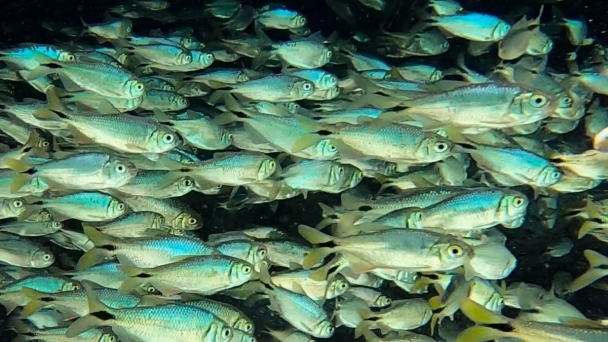
(VAN) The largest global assessment of freshwater animals on the IUCN Red List of Threatened Species reveals that 24% of the world’s freshwater fish are at high risk of extinction.

(VAN) The quality of agricultural products is not only key to winning the trust of international consumers but also crucial to attracting investments in food processing and production technology.